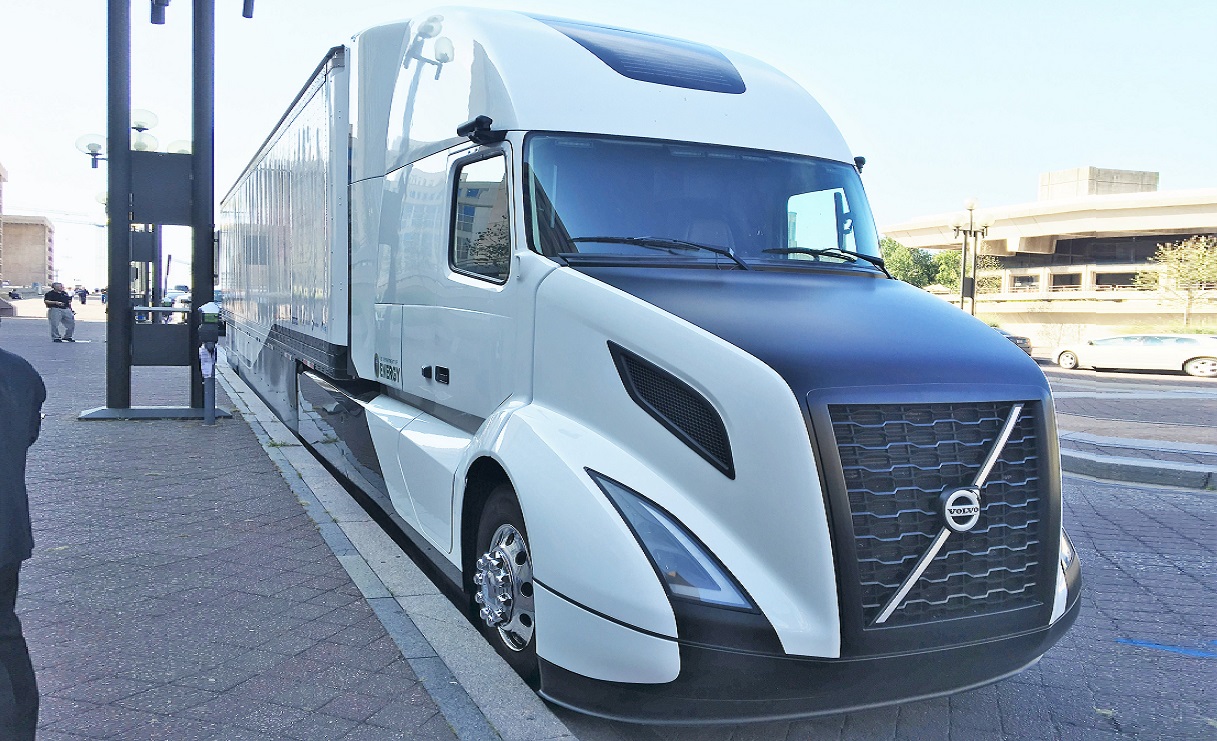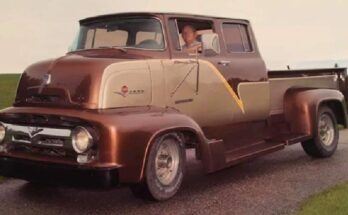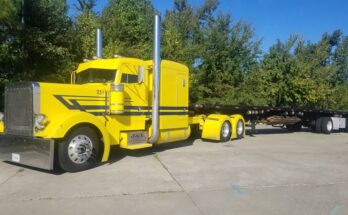After 5 years of development, Volvo Trucks North America has put its SuperTruck concept machine on the road. It exceeds its freight efficiency by over 75% and its fuel efficiency by 70%, with its 12 MPG performance (on some tests it did 13 MPG).
That’s 23 (and 21) liters per 100 kilometers.
How does it do it? Aerodynamics and powertrain improvements.
This economical Volvo sports a new aerodynamic bumper, flared chassis fairings on the VNL 630 and 670; and an aerodynamically enhanced roof for the 670. The engine compartments also have been optimized for airflow.
It looks like they have completely replaced the rear view mirrors on this truck as well, which is something a lot of you guys out there have commented about. “Where’s the mirrors?” Mirrors increase drag, of course, so replacing them with cameras is one way to make the truck more aerodynamic. However, it might seem a little strange to not have something as reliable and easily replaceable as a mirror.
Powertrain braking thermal efficiency was up to 50 percent on its tests.
Where can owner-operators and drivers buy these. Can’t. But the technology used in them will be put into the trucks you can buy.
But where these new ultra-efficient Volvos came from is a similar story: Many of Volvo’s improved technologies displayed on this truck came from the US Department of Energy’s US$20-million SuperTruck project.
According to Goran Nyberg, Volvo Trucks North America president, “Knowledge gained from the SuperTruck product is benefiting our customers today.”
Volvo had a goal it had to meet with this truck. It had obtained funding for development of the SuperTruck, but the company also made commitments.
Volvo picked up $20 million from the US Department of Energy, and this came with a goal of improving freight efficiency 50%.
“We thought we had a tough goal of 50% improvement when we started the project but the project has delivered 88%, which is quite impressive,” said Nyberg.
Volvo picked up another $20 million for its SuperTruck II project. This truck has a target goal of 100% freight efficiency compared with the baseline established in 2009.
This doesn’t just mean going another 12%, however. According to Volvo Trucks’ president, the SuperTruck uses a number of expensive technologies that they will have to eliminate, finding other solutions, in order to manage a one- to two-year payback on developing the technologies.
So SuperTruck sits in the middle of past and future technologies as a sort of flagship of what can be done — even it its too expensive to actually implement in the field.
“SuperTruck was a chance to look into the future as a truck manufacturer,” said Nyberg. “It gave us the possibility to look at what was coming and really start analyzing some of these trends we’re picking up on.”
One thing that may be of interest to a lot of truck drivers out there is that the new Volvos might have a new body and / or trailer design. One of the top comments about these trucks is that they are not visually appealing, and a lot of truckers take “pride in their ride” seriously.
“We didn’t want to go too crazy and design something that wouldn’t be realistic,” commented Pascal Amar, senior project manager at Volvo Trucks. “The use of the standard Volvo shape was a choice, but there is also the possibility of working with other futuristic designs, such as the teardrop-shaped trailer.
One of the things the design team found, though, was that the trailer shape limits the tractor shape. “We found things that we thought would help the tractor be more aerodynamic but they would only help if the trailer was a certain way,” explained Amar. So the Volvo design may change somewhat, but the tractor and trailer might be expected to change together.
 " >
" >


